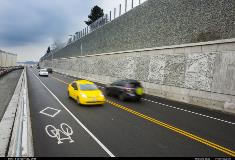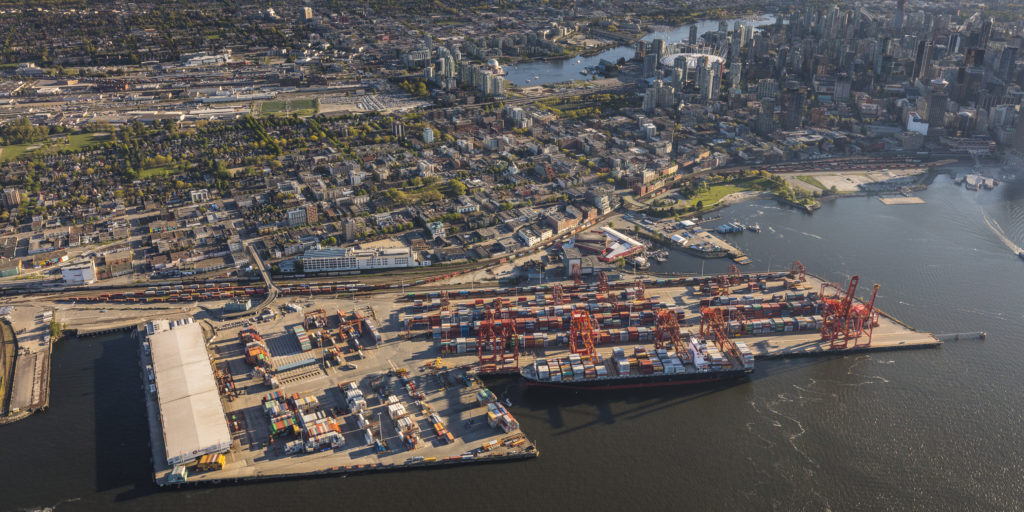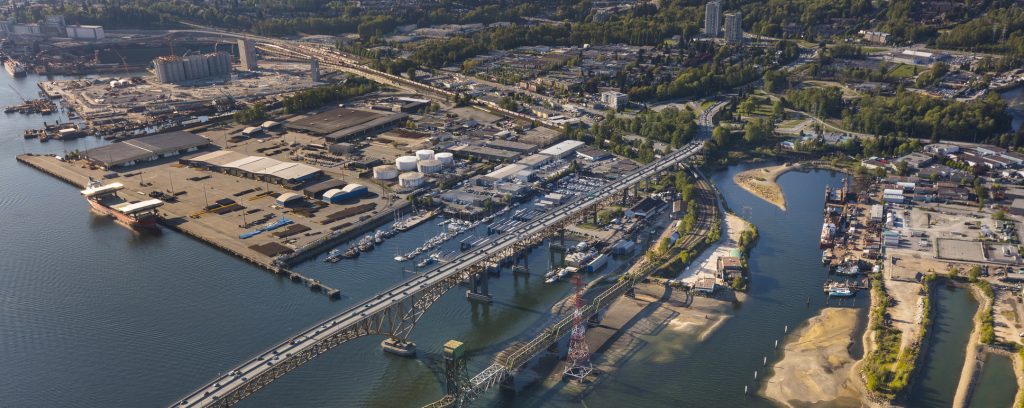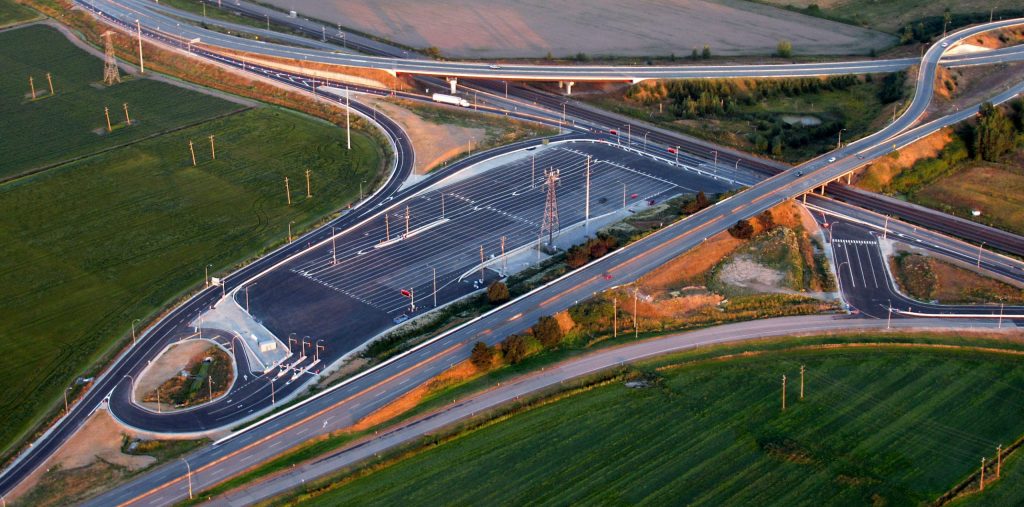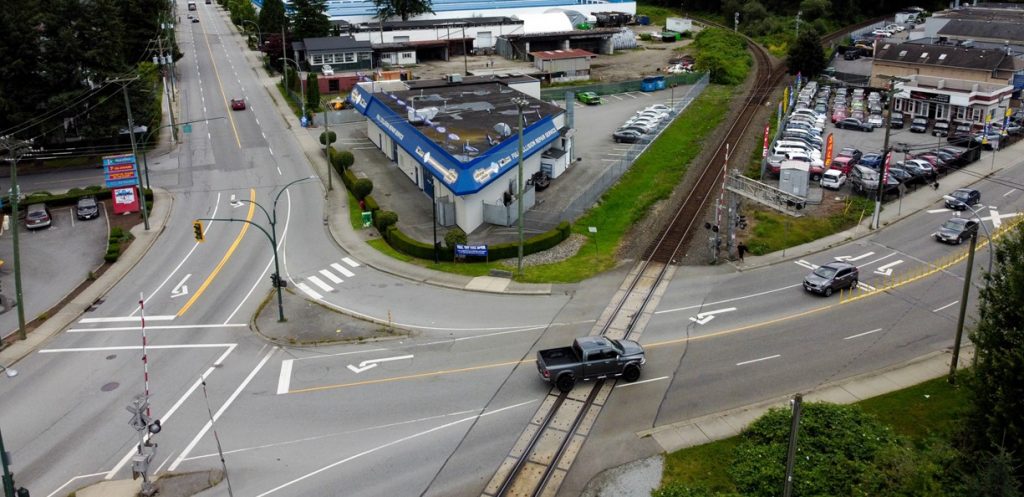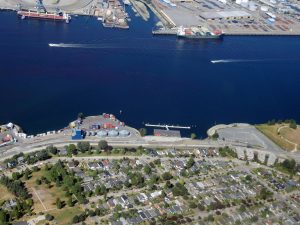The Vancouver Fraser Port Authority has a long and successful track record of leading and supporting the completion of important trade-enabling infrastructure projects to accommodate Canada’s growing trade through the Port of Vancouver. These projects have been delivered applying best practices in sustainability, environmental protection, and community engagement.
These projects have removed trade bottlenecks and helped increase trade efficiency, create trade-related jobs, reduce emissions, and improve safety in communities throughout the Vancouver gateway.
In support of our mandate to facilitate Canada’s trade, the port authority, together with government and industry partners, has invested nearly $1 billon between 2020 and 2025 to deliver road and rail infrastructure projects in close collaboration with municipalities and community stakeholders.
The Roberts Bank Rail Corridor Project consisted of nine road and rail improvement projects along a 70-kilometre rail corridor connecting the Roberts Bank terminal with the North American rail network.
Project benefits
Completed in 2014, the project included the construction of overpasses and other improvements to remove road and rail conflicts to support expanded trade and rail capacity, improved public safety, and reduced local traffic congestion and related emissions. The improvements are located in Delta, Surrey, the City of Langley and the Township of Langley to improve trade efficiency and reduce the impacts of trade on local communities.
Project partnerships
The $307 million project was funded by an unprecedented partnership between 12 agencies representing local, regional, provincial and federal governments, and the private sector, including a $50 million industry contribution pre-funded by the port authority.
The North Shore Trade Area upgrades consisted of six road and rail improvement projects along the north shore of Burrard Inlet that were completed in 2015.
Project benefits
These projects enhanced rail and port operations, improved access to terminal facilities for commercial traffic, reduced congestion on local roads, improved road safety, addressed slope stability concerns and furthered the North Shore Spirit Trail.
Project partnerships
These upgrades involved $283 million in public and private investment from nine funding participants, including a $59 million industry contribution prefunded by the port authority. The upgrades were identified in the 2008 North Shore Trade Area Study commissioned by Transport Canada, the port authority, the B.C. Ministry of Transportation and Infrastructure, Translink and the Greater Vancouver Gateway Council.
The South Shore Corridor Project consisted of two road improvement projects along the south shore of Burrard Inlet that were completed in 2015.
Project benefits
These projects enhanced rail and port operations by supporting additional rail lines to enable more fluid cargo movement, improved port truck traffic flow, eliminated road and rail conflicts on a number of active rail tracks, and improved efficiency of local transit service and safety for pedestrians and cyclists.
Project partnerships
This $127 million project was funded by public and private investment, including $58 million industry contribution prefunded by the port authority. These upgrades were identified in the 2009 South Shore Trade Area Study completed under the Asia-Pacific Gateway and Corridor Initiative to identify the transportation infrastructure needs to ensure continued and competitive operations.
The Lynnterm site upgrades and road realignment consisted of a realignment of Dominion Street in North Vancouver and upgrades of Lynnterm Terminal by terminal operator Western Stevedoring.
Project benefits
Completed in 2019, the road realignment increased safety for drivers and pedestrians and provided improved access to Harbourview Park for the community. The terminal upgrades included repurposing of an adjacent property for the terminal, which serves as a consolidation centre for forest products, steel and other breakbulk commodities in the Pacific Northwest.
Project partnerships
The realignment of Dominion Street received funding from the Government of Canada’s National Trade Corridor’s Fund.
The Deltaport Truck Staging Facility was completed in 2020 and was built to provide a designated port container truck staging area for trucks going to the Deltaport container terminal in Roberts Bank. The facility can accommodate up to 140 trucks and includes a secure vehicle access gate requiring a valid Port Pass, a commercial vehicle safety and enforcement area for truck safety inspections, a new highway exit ramp to facilitate access to Highway 17, and an additional road exist to allow traffic access onto Deltaport Way.
Project benefits
The facility addressed long-standing community concerns about road safety by reducing port-destined truck queues along Deltaport Way and the Roberts Bank causeway. The facility will also reduce emissions caused by engine idling and traffic congestion. Before these improvements, trucks lined up along the causeway when arriving early for reservations or during a closure of the terminal.
Project partnerships
The project was developed in partnership with the City of Delta, and the provincial and federal governments, and was jointly funded by Transport Canada, the B.C. Ministry of Transportation and the port authority.
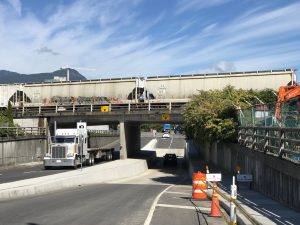 The Mountain Highway Underpass Project was completed in 2021 to deepen the existing underpass under the rail tracks by approximately one metre to provide space for oversized cargo such as heavy machinery to pass under the existing CN rail bridge in North Vancouver.
The Mountain Highway Underpass Project was completed in 2021 to deepen the existing underpass under the rail tracks by approximately one metre to provide space for oversized cargo such as heavy machinery to pass under the existing CN rail bridge in North Vancouver.
Project benefits
In addition to enhancing the movement of trade-related cargo through Lynnterm Terminal, the project alleviated the community impacts of growing trade and provided improvements to the road and sidewalk to enhance pedestrian, cyclist and vehicle access to properties in the area. The project included an opportunity to recognize Indigenous culture through artwork embossed into the eastern concrete walkway developed in partnership with Squamish Nation and artist Yul Baker.
Project partnerships
The project was developed in collaboration with Lynnterm terminal operator Western Stevedoring, the District of North Vancouver, CN and Squamish Nation. The project was part of the Greater Vancouver Gateway 2030 program and funded by the Government of Canada through the National Trade Corridors Fund.
Studies and early design work on the Westwood Street Rail Crossing Improvements Project was completed in 2022, which explored options to separate road and rail at two crossings along Westwood Street that borders Coquitlam and Port Coquitlam.
Project benefits
While accommodating trade growth and increasing supply-chain job opportunities, the elimination of road and rail crossings would provide more reliable commute times, improve public safety and local emergency response, and reduce road congestion, train noise, emissions and energy consumption. Advancing this project to the detailed design and construction phase is subject to securing additional funding.
Project partnerships
These upgrades were identified as a priority through a collaborative planning process by the port authority, Transport Canada, Translink, B.C.’s Ministry of Transportation and Infrastructure, and the Greater Vancouver Gateway Council.
The Commissioner Street Road and Rail Realignment Project was completed in 2022, which widened and realigned Commissioner Street along the south shore of Burrard Inlet in Vancouver. The realignment of the street north between Nanaimo and Slocan streets supported improved capacity on the south shore to move goods and improve road and port operations.
The port authority led the road improvements with the completion of the Commissioner Street Road and Rail Realignment Project. CP is leading the rail improvements with the Commissioner Street Rail Expansion Project, which will expand their existing rail infrastructure along this corridor. This project is anticipated to be complete by the end of 2023. For any questions or concerns about the project or rail operations, please visit the CP website.
Project benefits
In addition to improving port truck movements and traffic flow, the project helped improve access to terminal facilities for commercial traffic and enabled safe and efficient access to port lands for employees and service providers. It also provides land for rail track expansion, supporting trade growth and increased supply chain-related jobs.
Project partnerships
The project received funding in 2019 from the Government of Canada’s National Trade Corridors Fund and was the second NTCF project completed by the port authority.


